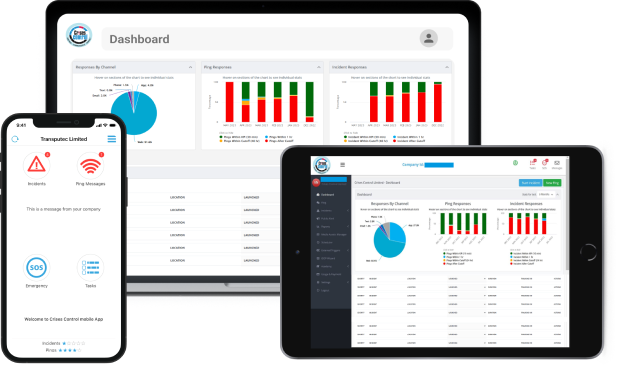Written by Anneri Fourie | Marketing Executive
In today’s fast-paced business environment, having an efficient emergency mass communication system is crucial for ensuring the safety and continuity of operations during a crisis. While many organisations recognise the importance of these systems, common mistakes can undermine their effectiveness.
This blog will highlight five frequent pitfalls businesses face when deploying and using emergency mass communication systems and provide practical tips to avoid them. Additionally, we will discuss how Crises Control can help you overcome these challenges and optimise your emergency management efforts.
The Importance of Emergency Mass Communication Systems
Emergency mass communication systems play a pivotal role in crisis management and emergency management. They ensure that vital information reaches all stakeholders promptly, minimising the impact of emergencies and facilitating a coordinated response. Whether dealing with natural disasters, cyber-attacks, or other unforeseen events, effective communication can mean the difference between chaos and control.
Mistake 1: Lack of Comprehensive Planning
One of the most significant mistakes businesses make is failing to plan thoroughly before implementing an emergency mass communication system. Without a comprehensive plan, the system may be ineffective, leading to confusion and delays during a crisis.
Consequences
- Inefficient response times
- Confusion among employees
- Delayed communication
Tips to Avoid This Mistake
- Conduct a Detailed Risk Assessment: Identify potential risks and vulnerabilities specific to your organisation.
- Develop a Comprehensive Communication Plan: Outline clear protocols for different types of emergencies.
- Involve Key Stakeholders: Ensure that all relevant departments and personnel are involved in the planning process.
Mistake 2: Inadequate Training and Drills
Implementing an emergency mass communication system is only effective if your team knows how to use it. Many businesses neglect regular training and drills, resulting in a lack of preparedness during actual emergencies.
Consequences
- Staff may be unsure how to operate the system
- Increased response times
- Potential for miscommunication
Tips to Avoid This Mistake
- Schedule Regular Training Sessions: Ensure all employees are trained on using the system.
- Conduct Periodic Drills: Test the system with realistic scenarios to familiarise staff with its operation.
- Use Realistic Scenarios: Drills should mimic potential real-world events to provide valuable practice.
Mistake 3: Overlooking Multi-Channel Communication
Relying solely on a single communication channel can lead to message delivery failures. A robust emergency mass communication system should leverage multiple channels to ensure that critical messages reach all intended recipients.
Consequences
- Messages may not reach everyone
- Delayed responses
- Increased risk during emergencies
Tips to Avoid This Mistake
- Utilise Multiple Communication Channels: Use SMS, email, voice calls, and push notifications.
- Ensure Redundancy: Implement backup channels to guarantee message delivery.
- Test All Channels Regularly: Conduct tests to ensure functionality and reliability.
Mistake 4: Failure to Keep Contact Information Updated
Outdated contact information can prevent crucial messages from reaching the right people. Regularly updating contact information is essential to maintaining the effectiveness of your emergency mass communication system.
Consequences
- Delayed or missed communications
- Increased risk during emergencies
- Ineffective response efforts
Tips to Avoid This Mistake
- Implement Regular Updates: Establish a system for periodic updates of contact information.
- Encourage Employees to Update Information: Ensure staff regularly verify and update their details.
- Use Automated Tools: Leverage technology to verify and update contact details efficiently.
Mistake 5: Ignoring Feedback and Continuous Improvement
Emergency mass communication systems should evolve based on feedback and continuous improvement. Ignoring this aspect can lead to a stagnant system that fails to meet evolving needs.
Consequences
- The system may become outdated
- Missed opportunities for improvement
- Reduced effectiveness over time
Tips to Avoid This Mistake
- Collect Feedback: Gather user feedback after drills and real incidents.
- Analyse Performance Data: Identify areas for improvement based on system performance.
- Continuously Update and Improve: Implement changes and enhancements based on feedback and technological advancements.
How Crises Control Can Help
Crises Control offers comprehensive solutions to help businesses avoid these common pitfalls and maximise the effectiveness of their emergency mass communication systems. Here’s how Crises Control can support your organisation:
Comprehensive Planning Assistance
Crises Control provides expert guidance in developing detailed emergency communication plans tailored to your organisation’s specific needs. Our team helps conduct thorough risk assessments and involves key stakeholders to ensure a robust plan is in place.
Training and Drill Programs
Crises Control offers regular training sessions and realistic drill scenarios to ensure your staff is well-prepared. These programs familiarise employees with the system and improve their response capabilities during actual emergencies.
Multi-Channel Communication
Crises Control’s platform leverages multiple communication channels, including SMS, email, voice calls, and push notifications, ensuring redundancy and reliable message delivery. Our system is designed to handle high volumes of communication efficiently.
Automated Contact Management
Keeping contact information updated is simplified with Crises Control’s automated tools. These tools regularly verify and update contact details, ensuring that critical messages reach the right people without delays.
Feedback and Continuous Improvement
Crises Control values user feedback and continuously enhances our platform based on performance data and evolving needs. Our commitment to improvement ensures your emergency mass communication system remains effective and up-to-date.
Conclusion
Avoiding common mistakes when using emergency mass communication systems is crucial for effective crisis management and emergency management. By conducting comprehensive planning, providing adequate training, utilising multi-channel communication, keeping contact information updated, and continuously improving your system, you can enhance your organisation’s preparedness and response capabilities.
Crises Control is here to help you achieve these goals. With expert planning assistance, robust training programs, multi-channel communication solutions, automated contact management, and a commitment to continuous improvement, Crises Control ensures your emergency mass communication system is always ready to perform.
Contact us today to get a free personalised demo of Crises Control’s emergency mass communication system and see how we can help you enhance your crisis management and emergency response capabilities.
Request a FREE Demo









